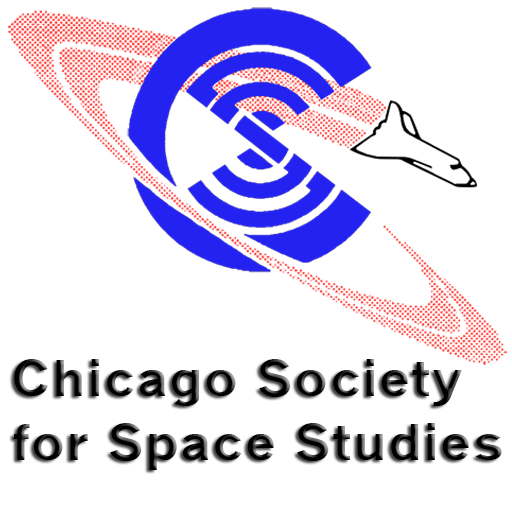On Saturday, November 11 2001, the Chicago area chapters of the National Space Society were the proud sponsors of the 2001 Space Exploration Roundtable. This event was held at the Hyatt in Schaumburg IL. Our venue at the Hyatt was made possible by the generosity of the event’s cosponsor – the Windycon Science Fiction Convention. We were also very pleased to be able to make this a free event open to the general public.
The Roundtable was conceived and moderated by Jim Plaxco, a NASA JPL Solar System Ambassador and director of the Chicago Society for Space Studies chapter of the National Space Society. A general introduction to the day’s sessions was given by Jeffrey Liss, the Executive Vice President of the National Space Society. The Space Exploration Roundtable consisted of three separate panel discussions – each lasting approximately one hour. The three panels were:
- The Future of Robotic Exploration
- Commercial Space and Space Tourism
- A Human Future in Space
We were very fortunate in having been able to recruit an excellent group of individuals to serve as panelists for the various sessions. Panelists for the sessions were:
| Panel | Panelists |
| The Future of Robotic Exploration |
|
| Commercial Space and Space Tourism |
|
| A Human Future in Space |
|
The first session, titled “The Future of Robotic Exploration” dealt with the various robotic missions to the planets and the relevance of these missions to our society. Also discussed was the impact of the “Faster, Better Cheaper” mission model implemented by former NASA Administrator Dan Goldin. Upcoming missions, as well as potential involvement of private enterprise in planetary exploration, were discussed as well. The audience followed the discussion closely and asked questions throughout the course of the panel.
After a short break, the second session, “Commercial Space and Space Tourism” began. Debate amongst the panelists was more lively as discussion centered on how to move from a government model to a private enterprise model for space exploration, especially with respect to those operations requiring human missions to space. A central issue of the discussion was the need for cheap access to space and what methodologies would best bring about dramatically lower launch costs. Potential future products manufactured in space and the potential for space tourism were explored as drivers for the human expansion into the space frontier. The panelists also explored the impact of government regulations on commercial activities and how these regulations may be made more friendly to private enterprise.
The final session for the day was “A Human Future in Space” in which the panelists examined the issues of the human role in space: both in terms of today’s professional astronaut trips to space and the future prospect for private citizens, entrepreneurs, and settlers to make their own way into space. This was the most speculative and wide-ranging of the three panels. In some respects, the discussion picked up where the “Commercial Space and Space Tourism” panel left off since lower launch costs and expanded space commercialism were seen as necessary precursors to a large scale human presence in space. The role of the International Space Station as a starting point was discussed, especially it’s role as a host for commercial activities. Also debated was the question of what our next step should be: do we return to the Moon, send human missions to Mars and/or the asteroids or seek the establishment of O’Neill colonies? One consensus did emerge during the course of this panel: the common denominator required to make any of this possible is cheap access to space. This is the Holy Grail of expanding humanity’s presence beyond the surface of the Earth.
The general reaction of both the panelists and the audience to the three panels were quite positive and we all learned a great deal about what it will take to move humanity forward into space. The success of this panel has led the area chapters to beginning the planning of a follow-up event for 2002.
